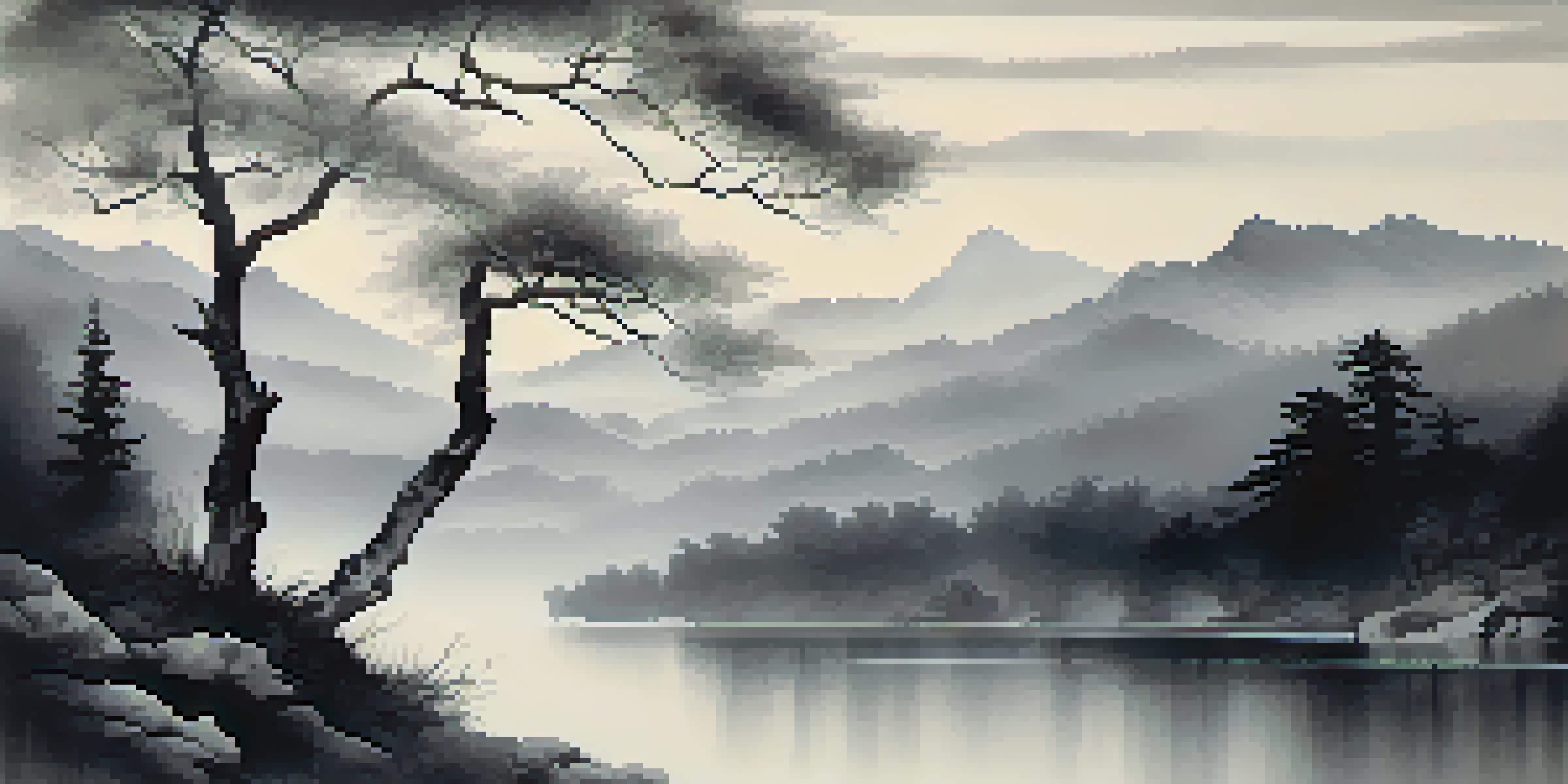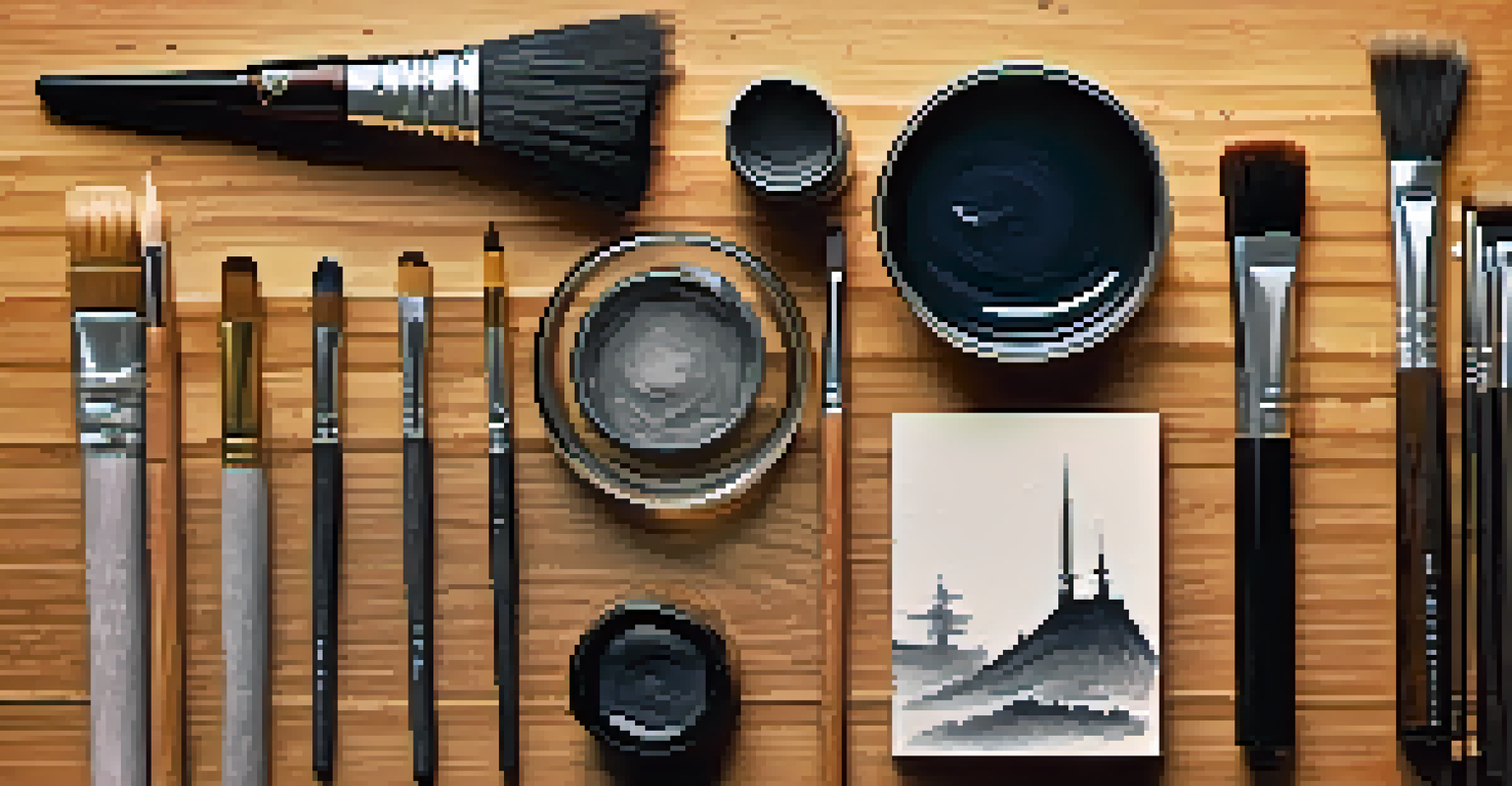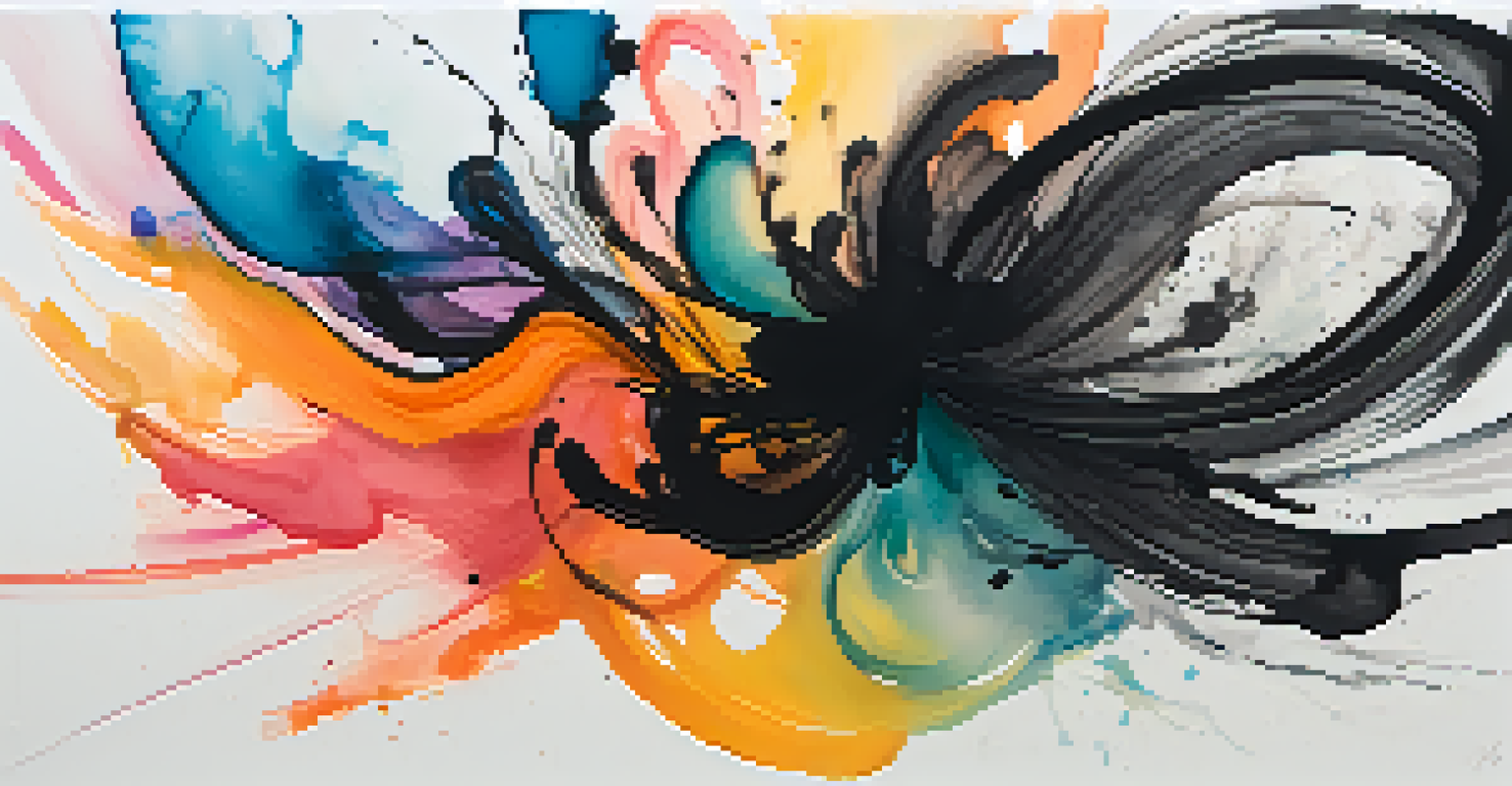Mastering Ink Wash Techniques: Create Stunning Artwork Today

Introduction to Ink Wash Techniques and Their Appeal
Ink wash techniques, also known as 'sumi-e' in Japanese art, blend simplicity and depth to create stunning visuals. This traditional method uses varying concentrations of ink to produce delicate gradients and rich textures. Artists around the world are drawn to ink wash for its ability to convey emotion and movement with just a few strokes.
Ink wash painting is a silent conversation between the artist and the paper, where each stroke carries a piece of the soul.
The allure of ink wash lies in its versatility; it can be used for both detailed illustrations and abstract expressions. Whether you’re capturing the gentle curve of a tree branch or the fluid motion of water, ink wash allows for an organic flow that can be both calming and dramatic. This adaptability makes it a favorite among artists of all skill levels.
As we delve into mastering ink wash techniques, you'll discover how to harness this medium's potential. From understanding the tools you need to perfecting your brush techniques, this guide will help you create artwork that resonates with viewers and showcases your unique style.
Essential Tools and Materials for Ink Wash Art
Before diving into your ink wash journey, it's crucial to gather the right tools and materials. At a minimum, you'll need quality ink, brushes of various sizes, and a suitable paper that can absorb water without warping. Each of these elements plays a significant role in the final outcome of your artwork.

The type of ink you choose can greatly influence the character of your work. Traditional sumi ink is often favored for its rich black color and smooth application, while other water-based inks can offer different effects. Experimenting with various inks can lead to exciting discoveries in texture and tone.
Mastering Ink Wash Techniques
Understanding and practicing basic and advanced ink wash techniques will enhance your artistic expression.
Brushes come in numerous shapes and sizes, from fine-tipped for detail work to larger brushes for washes and backgrounds. Investing in a few good brushes will allow you to explore different techniques effectively. Remember, the right combination of tools can elevate your art and help you achieve the stunning results you envision.
Basic Techniques: Getting Started with Ink Wash
Starting with basic techniques is essential for mastering ink wash. Begin with simple exercises like creating varying shades of gray by diluting ink with water. This practice will help you understand how ink interacts with paper and how to control the flow of your brush strokes.
Art is not freedom from discipline, but disciplined freedom.
Once you're comfortable with gradients, try creating simple shapes and forms. Use broad strokes for backgrounds and finer strokes for details. As you practice, pay attention to how ink settles on different areas, and embrace the unpredictability that comes with this medium.
Don’t forget to have fun during this exploration! Allow yourself to make mistakes and learn from them. Each piece you create will contribute to your growth as an artist and enhance your understanding of ink wash techniques.
Exploring Advanced Techniques for Depth and Texture
Once you've grasped the basics, it’s time to explore advanced techniques that add depth and texture to your artwork. Techniques like layering, wet-on-wet, and dry brushing can create intricate details and dynamic contrasts. Each method offers unique results that can enhance the overall composition of your piece.
Layering involves applying washes in stages, allowing each layer to dry before adding more ink. This technique helps build depth and complexity, making your artwork visually captivating. Experiment with different drying times to see how they affect the final look.
Essential Tools for Ink Wash Art
Gathering quality tools and materials is crucial for achieving the desired effects in your ink wash creations.
Wet-on-wet technique, where you apply wet ink onto wet paper, creates soft, blended edges that evoke a sense of movement. Conversely, dry brushing can produce rough textures that add interest. By combining these techniques, you can create artwork that feels alive and engaging.
Incorporating Color: A New Dimension to Ink Wash
While traditional ink wash is often monochromatic, incorporating color can bring a fresh perspective to your artwork. Watercolor paints or colored inks can be used alongside your black ink to create vibrant compositions. This blend of media can highlight certain areas and add emotional impact.
Start by experimenting with small color washes over your ink drawings. Observe how colors interact with the ink and how they can change the mood of your piece. Soft pastels can blend beautifully, while bold colors can create striking contrasts.
As you gain confidence, try layering colored inks over ink wash backgrounds. This technique can produce stunning visual effects and create a sense of harmony between the two mediums. Embracing color allows you to expand your creative boundaries and express your artistic vision more fully.
Common Mistakes to Avoid in Ink Wash Art
Even experienced artists can make mistakes when working with ink wash, but understanding common pitfalls can help you avoid them. One frequent error is using too much water or ink, leading to muddied results. It’s essential to find the right balance for your desired effect.
Another mistake is rushing the drying process. Allowing each layer to dry completely before adding more can prevent unwanted blending. Patience is key in ink wash, as it often reveals its beauty over time.
Embrace Imperfections in Art
Recognizing and accepting the unpredictability of ink wash can lead to unique outcomes and personal growth as an artist.
Lastly, don’t be afraid of imperfections. Embrace the unique qualities of ink wash, including the unpredictable nature of the medium. Each piece is a learning experience, and what may seem like a mistake can lead to a beautiful, unexpected outcome.
Final Thoughts: Embrace Your Artistic Journey
As you embark on your ink wash journey, remember that mastery comes with practice and exploration. Each stroke of the brush is a step toward developing your unique style and voice as an artist. Embrace the process and allow yourself to experiment without fear.
Art is not just about the final product; it’s about the joy of creation and self-expression. Celebrate your progress, learn from your experiences, and continue to challenge yourself with new techniques and concepts. The more you create, the more confident you’ll become.

So grab your tools, find inspiration in the world around you, and let the ink flow. With dedication and passion, you’ll soon be creating stunning artwork that reflects your artistic vision and resonates with others.